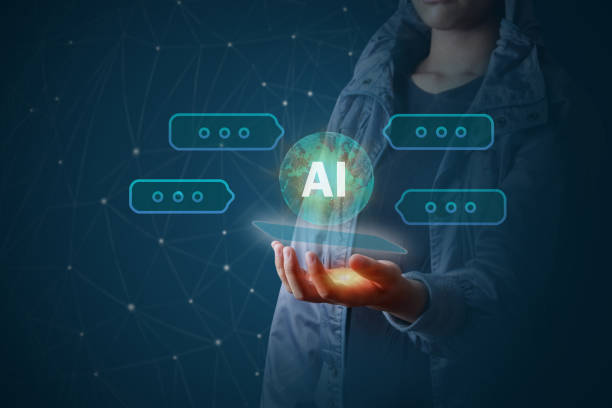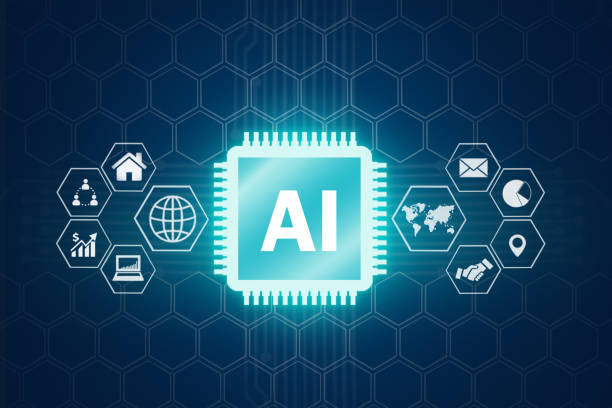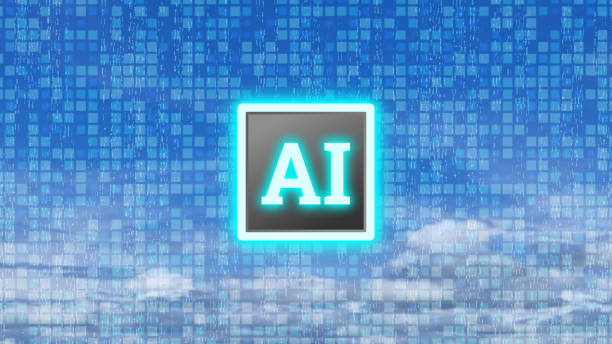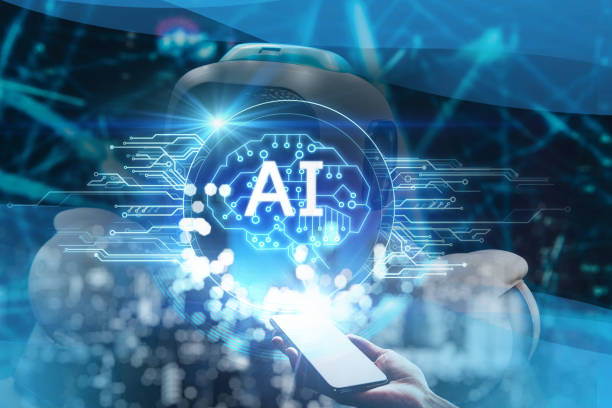Introduction to Mobile AI Applications and Their Growing Importance

Today’s world is rapidly changing, and #ArtificialIntelligence technology, especially in the #mobile context, plays a pivotal role in this transformation.
A mobile application that leverages AI capabilities is no longer a futuristic concept but an everyday reality that has profoundly transformed our user experience.
From personalized recommendations on video streaming platforms to smart voice assistants and photo editing tools, the presence of mobile AI applications is evident in every aspect of our lives.
These applications can automate complex tasks, analyze information, and even learn from user behavior to provide smarter performance.
The significance of this advancement lies in bringing AI from powerful cloud servers to our personal devices, namely smartphones.
This easy and constant access to AI capabilities provides unparalleled opportunities for innovation and creating entirely new user experiences.
In this article, we will comprehensively explore various aspects of mobile AI applications and analyze their impact on daily life, underlying technologies, and the future of this field.
Are you frustrated with the low conversion rates of your online store?
Rasaweb is your definitive solution with professional e-commerce website design!
✅ Increase your sales and revenue
✅ Unparalleled user experience for your customers
⚡ Get a free consultation now!
Underlying Technologies of Mobile AI Applications

Implementing mobile AI applications requires a deep understanding of the underlying technologies that make these capabilities possible.
The core of many of these applications is Machine Learning, which allows devices to learn from data without explicit programming.
Subsets of machine learning like Deep Learning and Convolutional Neural Networks play a vital role in image processing, speech recognition, and pattern analysis.
The main challenge in mobile is running these complex models with limited computational resources.
For this reason, optimizing models for on-device execution (On-device AI or Edge AI) has become highly important.
These optimizations include reducing model size, utilizing dedicated hardware like NPUs (Neural Processing Units) in mobile processors, and developing frameworks such as TensorFlow Lite and Core ML, which enable developers to efficiently run machine learning models on smartphones.
Furthermore, Natural Language Processing (NLP) for voice assistants and chatbots, and Computer Vision for face recognition, augmented reality, and image editing are other important pillars in the development of mobile AI tools.
This combination of technologies provides the countless possibilities of mobile AI applications.
Diverse Applications of Mobile AI in Everyday Life

Mobile AI applications have widely and diversely penetrated our daily lives, making many of our activities simpler and smarter.
In the entertainment sector, music and video streaming applications use AI for personalized content recommendations based on user preferences and viewing history.
Voice assistants like Siri, Google Assistant, and Bixby are prime examples of this technology, using natural language processing to enable users to perform various tasks with voice commands, from setting reminders to searching the web.
In the field of image and video editing, AI-powered applications offer smart filters, automatic background removal, image quality enhancement, and even digital art generation.
In the health and wellness sector, mobile AI applications can track sleep patterns, analyze exercise activities, and even detect early signs of diseases by analyzing skin images.
Language translation apps use AI to provide real-time voice and text translations, breaking down communication barriers.
Finally, in routing and navigation, AI suggests optimal routes considering traffic and road conditions, enhancing the driving experience.
This is just a small part of the vast range of applications for mobile AI programs, which are evolving and expanding daily.
| Application Area | AI Capability | Example Application/Service |
|---|---|---|
| Personal Assistants | Speech Recognition, Natural Language Processing | Siri, Google Assistant, Bixby |
| Image and Video Editing | Computer Vision, Smart Filters | FaceApp, Remini, Google Photos |
| Language Translation | Machine Translation, Speech Recognition | Google Translate, Microsoft Translator |
| Health and Wellness | Sensor Data Analysis, Pattern Recognition | Fitbit, MyFitnessPal (Smart Features) |
| Content Recommendation | Collaborative Filtering, Reinforcement Learning | Netflix, Spotify, TikTok |
Challenges and Limitations of Mobile AI Application Development

Despite numerous advantages, the development and deployment of mobile AI applications face unique challenges.
One of the most significant limitations is processing power and battery consumption.
Deep learning models typically require high computational power, which is difficult to provide on mobile devices due to hardware and thermal constraints.
This can lead to slow performance or rapid battery drain.
To address this, researchers and developers have turned to optimizing models for on-device execution, such as quantization and pruning of models, to reduce their size and complexity.
Data privacy is also a major concern.
Many mobile AI applications require access to a large volume of user data for optimal performance.
This can raise questions about how this information is collected, stored, and used by developing companies.
Adhering to privacy regulations like GDPR and CCPA, and implementing privacy-preserving methods such as Federated Learning, which processes data on the user’s device and only sends learning results to the server, is crucial.
Also, hardware and software diversity in the mobile ecosystem is another challenge.
Ensuring that a mobile AI tool works effectively across a wide range of devices with different operating systems requires careful design and extensive testing.
These limitations necessitate innovative approaches in design and engineering to realize the full potential of AI in mobile.
Does your current corporate website provide a worthy image of your brand and attract new customers?
If not, turn this challenge into an opportunity with Rasaweb’s professional corporate website design services.
✅ Significantly enhances your brand’s credibility and image.
✅ Paves the way for attracting leads and new customers for you.
⚡ Contact Rasaweb now for free and expert consultation!
Popular Development Tools and Frameworks for Mobile AI

For developers aiming to build mobile AI applications, there’s a set of specialized tools and frameworks that facilitate the implementation process.
One of the most widely used is Google’s TensorFlow Lite.
This framework allows machine learning models to run with smaller size and faster performance on mobile and IoT devices.
TensorFlow Lite supports various model formats and is compatible with different programming languages like Java, Kotlin, and Swift.
For the Apple ecosystem, Core ML is the native framework that iOS developers can use to integrate machine learning capabilities into their applications.
Core ML is specifically designed to leverage Apple’s dedicated hardware, such as the Neural Engine in A-series chips, leading to highly optimized performance.
PyTorch Mobile, the mobile version of the popular PyTorch framework, also allows developers to run PyTorch models directly on iOS and Android devices.
By providing simple APIs, these tools enable mobile developers to access advanced AI capabilities such as object detection, natural language processing, and image analysis.
Choosing the right framework depends on the target platform, model complexity, and available resources, but all of them strive to make mobile AI application development more accessible and efficient.
These frameworks play a vital role in expanding the range of applications for mobile AI tools.
The Future of Mobile AI Applications and Emerging Trends

The future of mobile AI applications promises immense transformations that will fundamentally change our experience with technology.
One important trend is the deeper integration of AI into operating systems.
Instead of AI being limited to a few specific applications, intelligent capabilities will be natively embedded in the core of operating systems (like iOS and Android).
This will allow applications to interact with AI more naturally and efficiently.
Another trend is the increased capabilities of On-device AI.
With advances in mobile chips and the development of dedicated neural processing units, the need for continuous cloud connection for complex processing will decrease.
This not only increases speed and responsiveness but also improves user privacy, as data remains on the device.
Federated Learning is also expanding as a way to train AI models while preserving privacy.
Furthermore, we expect to see the emergence of more mobile AI applications with Generative AI capabilities on mobile, allowing users to create creative content such as images, text, and even music directly from their phones.
These developments indicate that mobile AI applications will become not only smarter but also more personalized and efficient, playing a more central role in our daily interaction with the digital world.
Case Study: Top Mobile AI Applications

To better understand the capabilities of mobile AI applications, reviewing a few prominent examples can be very insightful.
One of the most well-known is Google Photos, which uses AI to intelligently organize photos, recognize people’s faces and objects, suggest editing filters, and even create automatic collages and animations.
The search feature in this application allows users to find photos based on content (e.g., “dog in the park picture”), which is almost impossible without AI.
FaceApp is another example of a mobile AI application that gained significant popularity.
This app, using complex neural networks, allows for changing people’s faces; from altering gender and age to adding smiles and changing hairstyles.
This example demonstrates the power of computer vision in the mobile domain.
In terms of productivity, Otter.ai is a mobile AI tool that can convert audio conversations to text and even distinguish different speakers.
This feature is highly beneficial for students, journalists, and professionals who need to transcribe meetings or lectures.
Duolingo, in the field of language learning, also uses AI to personalize the learning path, analyze user strengths and weaknesses, and provide targeted exercises.
These examples are just a part of the wide range of mobile AI applications, each of which has enriched our lives in some way and showcases the immense potential of this technology in the mobile context.
Each of these applications is a clear example of how AI capabilities can be leveraged to provide unique and practical services.
| Application Name | Key AI Features | Primary Use Case |
|---|---|---|
| Google Photos | Face/Object Recognition, Automatic Organization, Semantic Search, Editing Suggestions | Image Management and Optimization |
| FaceApp | Age/Gender Transformation, Smile Addition, Digital Makeup (Computer Vision) | Entertaining Selfie Editing |
| Otter.ai | Real-time Audio to Text Transcription, Speaker Recognition | Smart Note-taking, Meeting Transcription |
| Duolingo | Personalized Learning Paths, User Performance Analysis, Adaptive Exercises | Language Learning |
| Grammarly Keyboard | Smart Grammar and Spelling Correction, Vocabulary Suggestions, Tone Analysis | Improving Writing Quality |
Mobile AI and Data Privacy: Addressing a Key Challenge

As mobile AI applications advance, concerns regarding data privacy also increase.
Many of these applications require a large volume of user data to provide personalized and accurate services.
This data can include location information, photos, search history, behavioral patterns, and even biometric data.
This reliance on sensitive data raises questions about how this information is collected, processed, stored, and shared by developing companies.
To address this challenge, methods such as Federated Learning have been developed.
In this approach, AI models are trained on the user’s device, and only a summary of the learning results, without sending raw data, is sent to the central server.
This significantly helps maintain data privacy, as sensitive information never leaves the user’s device.
Additionally, End-to-End encryption and On-device Processing, which processes data directly on the phone and avoids sending it to the cloud, are other important solutions for strengthening privacy in mobile AI tools.
Users should also be vigilant in selecting and using mobile AI applications, reviewing app permissions, and understanding their privacy policies.
Balancing innovation and privacy will be one of the most significant challenges facing the mobile AI industry in the coming years.
Do you know that customers’ first impression of your company is your website? Multiply your business credibility with a powerful corporate website from Rasaweb!
✅ Custom and eye-catching design tailored to your brand
✅ Improved user experience and increased customer acquisition
⚡ Get a free consultation!
Important Tips for Choosing and Using Mobile AI Applications

Given the ever-increasing number of mobile AI applications in app markets, choosing and using them correctly has become very important.
The first tip is to check the developer’s credibility.
Applications developed by reputable and well-known companies usually adhere to higher standards of security and privacy.
Also, reviewing other users’ comments and ratings can provide good insight into the app’s performance and reliability.
The second tip is to pay attention to the app’s requested permissions.
Before installing, always check what information the mobile AI tool wants to access from your phone.
For instance, a photo editing app needs access to the camera and gallery, but might not need access to contacts or the microphone.
If unnecessary accesses are requested, one should proceed with more caution.
The third tip is regular app updates.
Developers constantly add new features, fix bugs, and most importantly, address security vulnerabilities.
Ensuring that your mobile AI application is always up-to-date helps maintain security and provides a better experience.
Finally, awareness of how data is used by the application is very important.
Review privacy policies to understand how your data is collected, stored, and used.
By following these tips, you can benefit from mobile AI applications while protecting your privacy and security.
Mobile AI: Transformative Across Various Industries
![]()
The impact of mobile AI applications is not limited to enhancing personal user experience; this technology is also creating profound transformations across various industries.
In the healthcare sector, mobile AI applications help doctors provide more accurate diagnoses, analyze patient data more efficiently, and even detect early signs of skin diseases using the phone’s camera.
Patients can also use these applications to track their health status and receive personalized recommendations.
In the retail industry, mobile AI applications help customers find desired products more easily, virtually try on clothes using augmented reality, and benefit from personalized offers.
For retailers, these applications also enable customer behavior analysis and inventory optimization.
In education, mobile AI tools enhance the learning experience for students by providing adaptive and personalized content.
They can provide instant feedback, answer questions, and even tailor learning paths based on an individual’s strengths and weaknesses.
Also in the financial sector, mobile AI applications assist users in budget management, detecting suspicious activities, and providing investment advice.
These examples demonstrate how mobile AI applications are becoming a key driving force for innovation and efficiency across a wide range of industries and hold immense potential for shaping the future of our economic and social activities.
Frequently Asked Questions
| Question | Answer |
|---|---|
| What is a mobile AI application? | It is software that uses AI technologies (such as machine learning, natural language processing, computer vision) on a mobile device to perform tasks, personalize user experience, or automate processes. |
| Name a few examples of these applications? | Voice assistants (like Siri, Google Assistant), facial recognition apps, smart keyboards, AI-powered photo editors, and translation applications. |
| What are the benefits of mobile AI applications? | Enhanced user experience, personalized services, task automation, improved accessibility, and providing offline capabilities for some AI features. |
| What are the challenges in developing these applications? | Limitations of mobile device processing power and battery life, data privacy concerns, optimizing the size of AI models, and the need for continuous updates. |
| How do these applications process data (on-device or cloud)? | Some process data locally (on-device) for speed and privacy, others send data to the cloud for processing, and often a hybrid approach is used. |
| What technologies are typically used in them? | Machine Learning (ML), Deep Learning (DL), Natural Language Processing (NLP), Computer Vision (CV), and Speech Recognition. |
| What impact do they have on daily life? | Simplifying tasks, improving communications, enhancing entertainment, providing personalized recommendations, and contributing to a smarter life. |
| What is “Edge AI” in the context of mobile? | It refers to running AI models directly on the mobile device (at the “edge” of the network) instead of sending data to a central cloud server. |
| What is the future trend for these applications? | More powerful on-device AI, deeper integration with Augmented Reality (AR), hyper-personalization, and a greater emphasis on ethical AI and privacy. |
| Are mobile AI applications always online? | No, many modern applications use on-device AI for core functionalities, allowing them to work offline or with limited connectivity, although some features may require internet access. |
And other services from Rasaweb Advertising Agency in the field of advertising:
Smart Customer Journey Map: An innovative service for improving SEO ranking through user experience customization.
Smart Advertising Campaign: A dedicated service for growth through customer behavior analysis based on key page optimization.
Smart Content Strategy: Professional optimization for customer acquisition using personalized user experience.
Smart Content Strategy: A creative platform for improving digital branding using real data.
Smart Social Media: Designed for businesses looking for online growth through SEO-driven content strategy.
And over hundreds of other services in the field of internet advertising, advertising consultation, and organizational solutions.
Internet Advertising | Advertising Strategy | Advertorial
Sources
The AI Revolution in Mobile: A Future in Your Hands
Top Mobile AI Applications for Smart Living
The Impact of Mobile AI on User Experience
Introducing the New Generation of Mobile AI Applications
? Are you ready to transform your business in the digital world? Rasaweb Afarin, with expertise in comprehensive digital marketing services including corporate website design, paves the way for your growth.
📍 Tehran, Mirdamad Street, next to Bank Markazi, Kazeroon Southern Alley, Ramin Alley, No. 6



